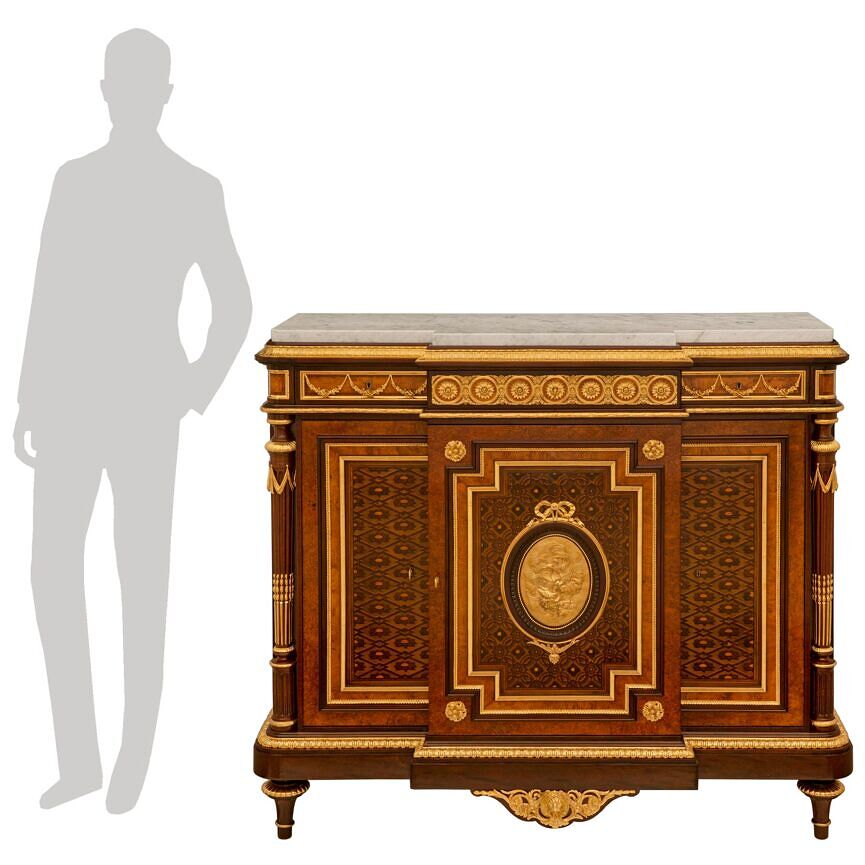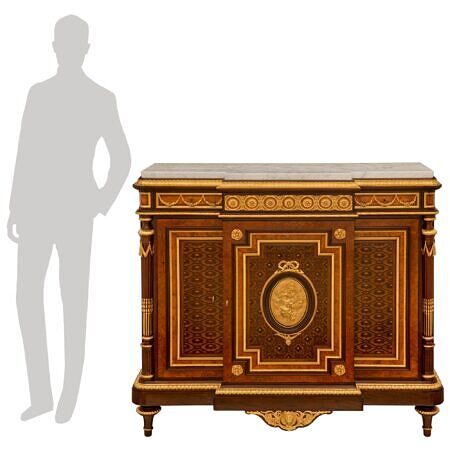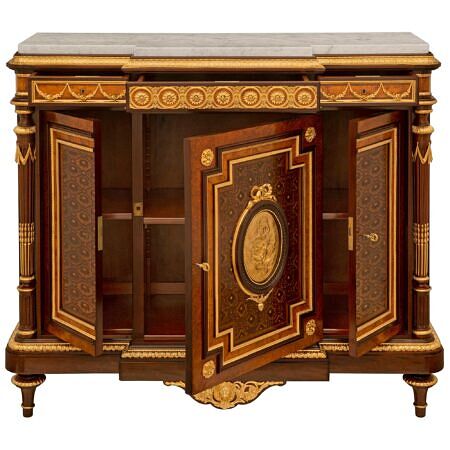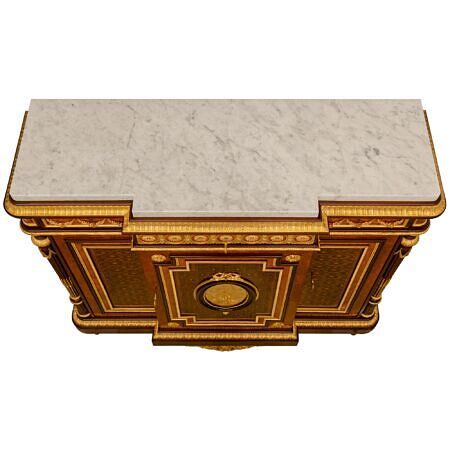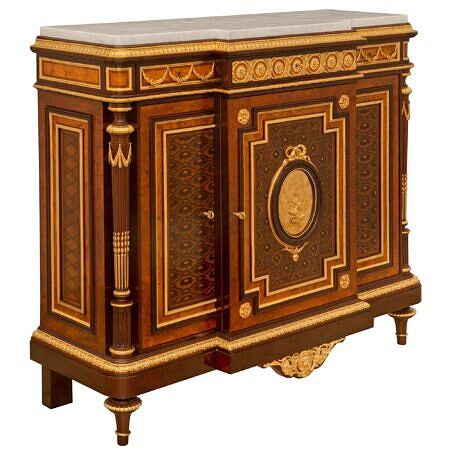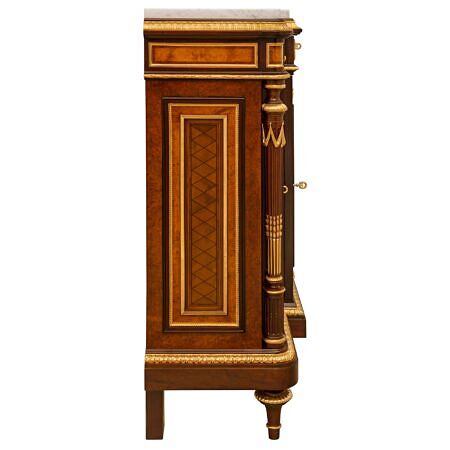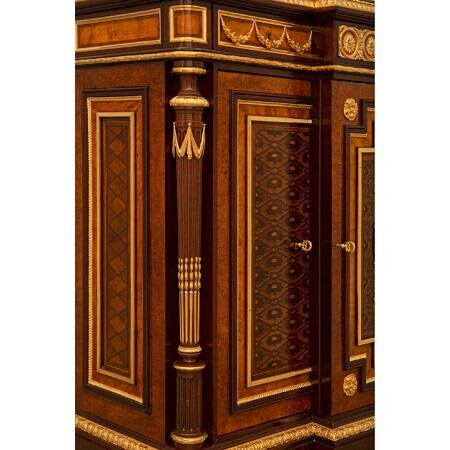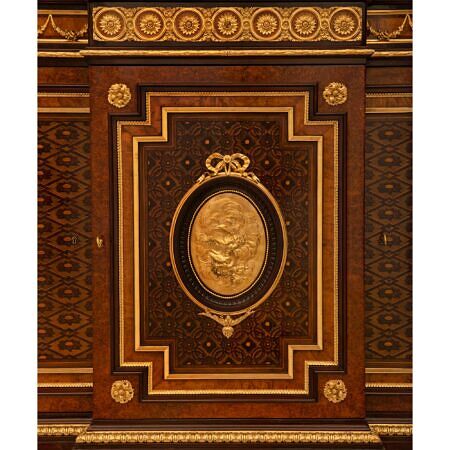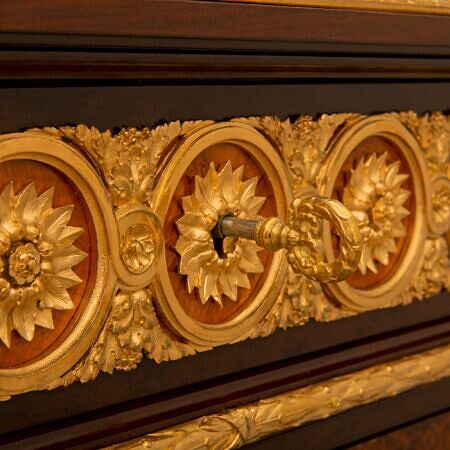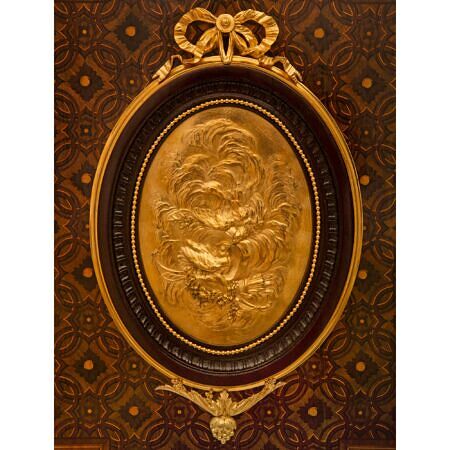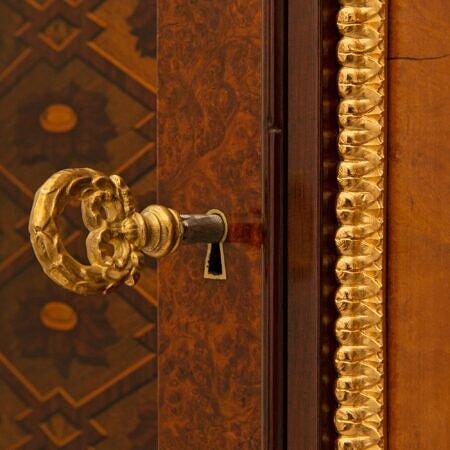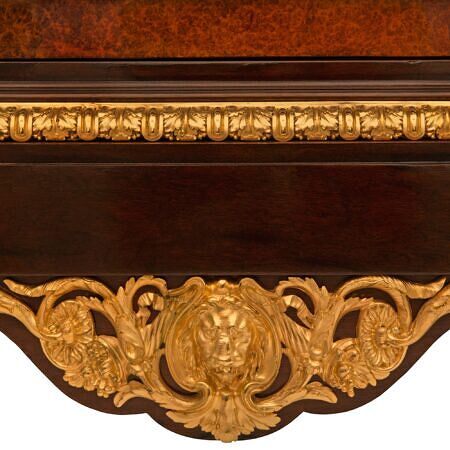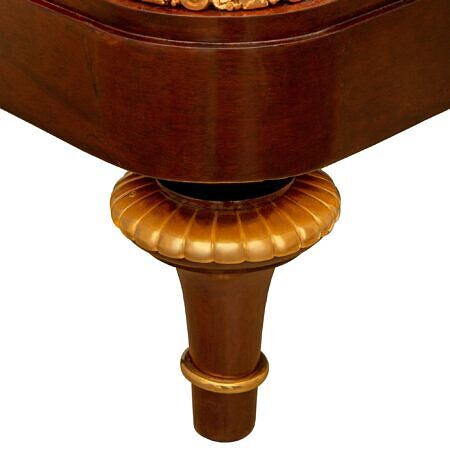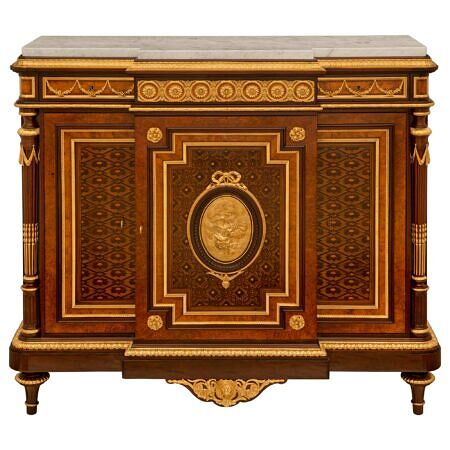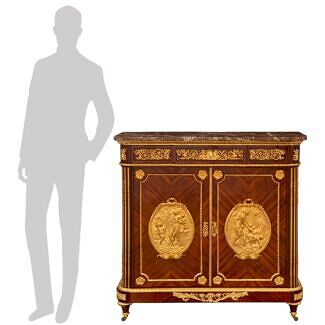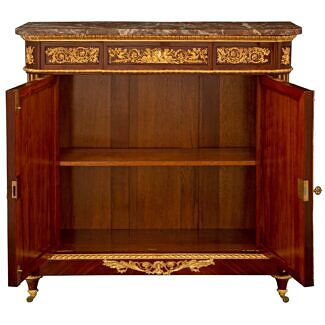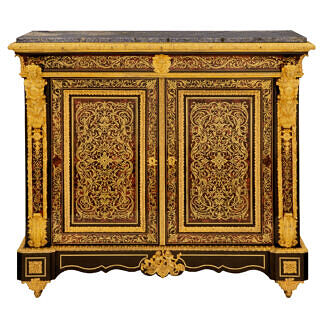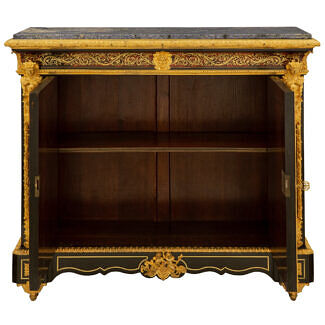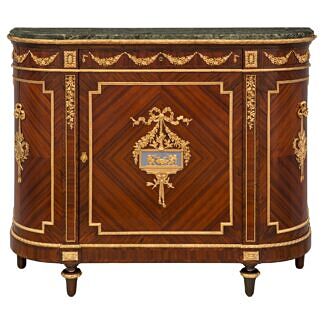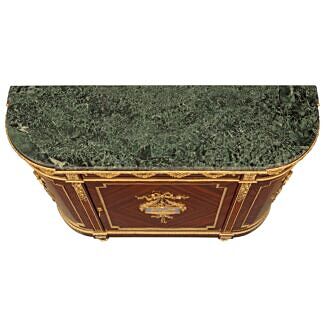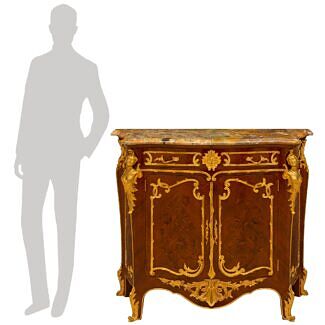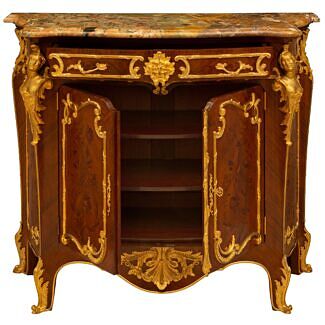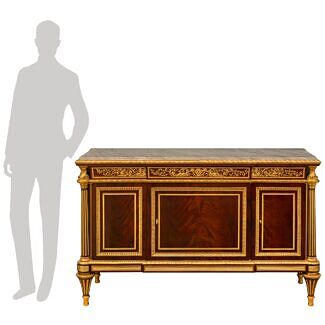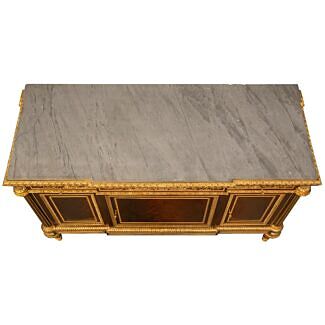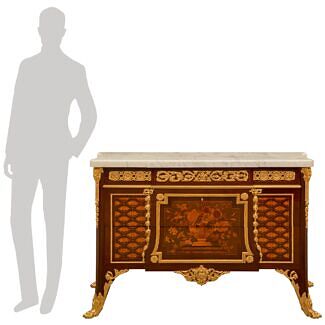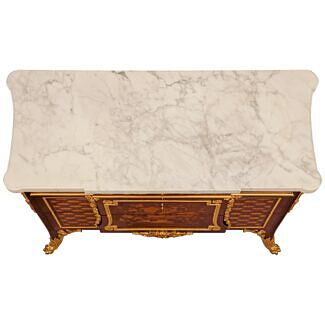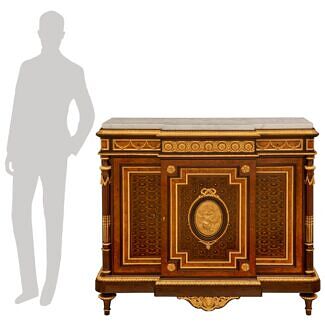A French 19th century Louis XVI st. Belle Époque period Mahogany, Kingwood, Tulipwood, burl wood, ormolu and white Carrara marble cabinet possibly by Maison Krieger
List: $54,500.00
An exceptional and high quality French 19th century Louis XVI st. Belle Époque period Mahogany, Kingwood, Tulipwood, burl wood, ormolu and white Carrara marble cabinet possibly by Maison Krieger. The three door three drawer meuble à hauteur d'appui cabinet is... — Read More
An exceptional and high quality French 19th century Louis XVI st. Belle Époque period Mahogany, Kingwood, Tulipwood, burl wood, ormolu and white Carrara marble cabinet possibly by Maison Krieger. The three door three drawer meuble à hauteur d'appui cabinet is raised by fine topie shaped legs with a delicate wrap around ormolu band and reeded top caps flanking a scalloped central reserve with pierced foliate ormolu designs and a handsome finely detailed lion head. The central door displays an exquisite fitted ormolu plaque with two love birds amidst clouds with a laurel branch, a bow and a quiver draped in richly chased blooming flower garlands set within beaded, reeded and mottled bands with a bottom acorn finial and a charming ribbon above. The central door also displays beautiful parquetry designs framed within most decorative ormolu mottled and Coeur de Rai bands, and superb burl wood with striking rosettes at each corner with the outer door also displaying exceptional floral lattice parquetry designs framed within the same manner and each displaying lovely discreet keyholes. The doors each open to reveal the adjustable shelves. Flanking the doors are striking architectural lightly tapered fluted columns with elegant fitted foliate chandelles, draped garlands, and reeded top caps. The central drawer displays stunning intricately detailed rosettes and foliate designs with most decorative geometric movements with the outer drawers decorated with richly chased swaging blooming flower garlands set on a beautiful burl wood background and framed within a fine mottled border. The sides display a exceptional recessed panel with diamond shaped inlaid designs also framed within ormolu mottled and Coeur de Rai bands and striking burl wood. Above a superb lightly curved reeded ormolu band is the fitted white Carrara marble top.
Maison Krieger was founded by Antoine and Nicolas Krieger in Paris in 1826. Producing and taking part in major exhibitions of the 19th century, including the Exposition Universelle and the 1849 Exposition des Produits de l'Industrie in Paris. Receiving a medal for their exhibition at the Universal Exhibitions of 1851 in London, and again in 1855, Paris. Maison Krieger created many pieces in Louis XV & Louis XVI styles, 18th century and Empire designs. Maison Krieger is recorded to have been an active client of François Linke. — Read Less
- Item # 12986
-
H: 47.5 in L: 51.5 in D: 18 in
H: 121 cm L: 131 cm D: 46 cm
- France
- 19th Century
- Burl Wood, Kingwood, Mahogany, Marble/Stone, Ormolu, Tulipwood
- Belle Époque Period Read More, Louis XVI st. Read More
- Maison Krieger Read More
Related products
-
# 12613 - H: 44" L: 44" D: 15"
-
# 3783 - H: 44" L: 48" D: 17"
-
# 11970 - H: 43" L: 53" D: 16"
-
# 8570 - H: 43" L: 49" D: 19"
Recently Viewed View All
-
# 13157 - H: 36" L: 59" D: 23"
-
# 12930 - H: 35" L: 53" D: 22"


